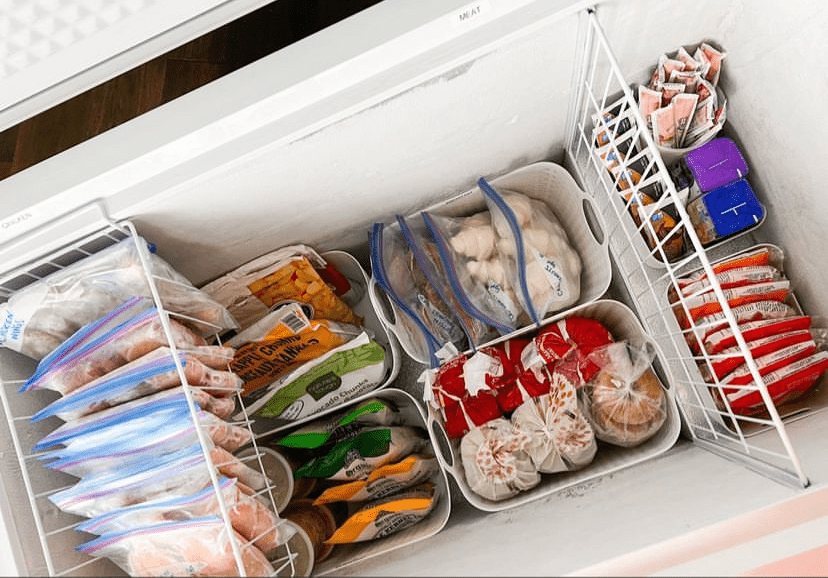Organizing your small chest freezer efficiently can save you time and reduce food waste. A well-organized freezer ensures that everything is easy to find, and it also helps maintain a consistent temperature, which is crucial for preserving the quality of frozen items. Here are some practical tips to help you organize your small chest freezer like a pro.
1. Declutter and Clean Your Freezer
Before organizing, start by decluttering your small chest freezer. Remove any expired or old items that you no longer need. Thaw the freezer and clean it thoroughly with a mild solution of water and vinegar or a specialized freezer cleaner. This ensures that your frozen space is sanitary and ready for optimal storage.
2. Categorize Foods
Grouping similar items together is one of the most effective ways to organize your small chest freezer. You can create categories such as:
- Proteins: Meat, poultry, fish, and seafood.
- Vegetables: Frozen veggies like peas, corn, or mixed vegetables.
- Fruits: Berries, chopped fruits, and other produce.
- Prepared Meals: Casseroles, soups, or stews.
Label each section for easy identification when searching for specific items.
3. Use Storage Solutions
Maximize the space in your small chest freezer with efficient storage solutions:
- Freezer Baskets: These allow you to separate items and quickly access what you need. Place like items in individual baskets for easy retrieval.
- Stackable Containers: Stackable containers can help save space while keeping things organized. Make sure to label them for clarity.
- Vacuum-Sealed Bags: For space-saving purposes, use vacuum-sealed bags to remove excess air from items, preserving freshness while optimizing storage space.
4. Label Everything
Labeling is essential for maintaining organization. Use freezer-safe markers or labels to note the contents and the date of freezing. This will help prevent any guesswork and ensure older items are used first.
5. Organize by Usage Frequency
Store the items you use most frequently near the top or in easily accessible baskets. Less frequently used items can be stored at the bottom or deeper inside the freezer. This approach ensures that you don’t need to dig through frozen items to find what you need.
6. Maintain Consistency
Regularly maintain your small chest freezer by checking expiration dates, rotating older items to the front, and organizing new additions. Consistent organization not only improves functionality but also helps you keep track of what you have stored.
7. Prevent Spills and Leaks
Using airtight containers and sealed bags reduces the risk of freezer burn and messy spills. Keep an eye out for any leaks or cracks in bags or containers to prevent contamination and freezer malfunctions.
By following these steps, your small chest freezer will be more organized, helping you maximize storage space, maintain food quality, and simplify your food storage routine.
